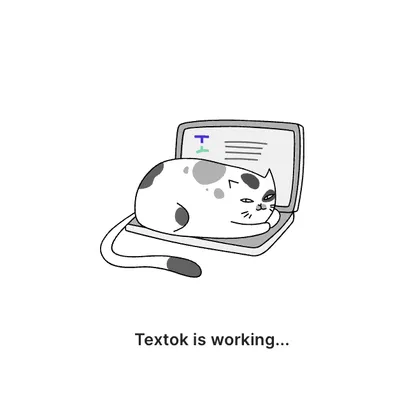Let’s admit it: there’s an awkward silence in content teams right now. I have talked to over 70 writers and content team leads over the last months, and I see what’s going on.
Most of the teams have at least some content guidelines, brand guidelines, tone of voice guidelines, workflow management systems, but nothing when it comes to AI. Which is what their copywriters use to create the content.
Many writers are leaning on ChatGPT, Claude, or Gemini to speed up research or sketch outlines. Some use it to write drafts or fragments of texts. Others avoid it entirely.
As a result, content feels uneven — some pieces pop, others fall flat. Writers feel paranoid about being “caught,” while others worry they’re lagging behind by not using the technology everyone else uses.
And here’s the truth: your team is already using AI.
The Teams Who Win Don’t Ban AI. They Keep It On the Leash.
By now it’s pretty clear that AI isn’t a temporary fad — it’s another tool in the toolbox. Ignoring it won’t shield your brand voice or writing standards.
What actually works? Guardrails — clear, actionable rules that steer large language models to produce content that’s on-brand, ethical, and aligned with your goals.
And thanks to Writitude, you don’t need to be an engineer — or write a 50-page policy — to get started.
Why Guardrails Matter More Than Ever
Generative AI is powerful—but it doesn’t inherently know your voice, values, or brand standards.
Without guardrails, LLMs may:
- Drift away from your brand tone;
- Generate “slightly off” messaging;
- Reinforce internal biases or non-inclusive phrasing.
When writers are left to improvise, inconsistencies and quality dips are inevitable.
What Every Smart Content Team Actually Needs
Forget 40-page manuals. What you need is clear, collaborative, and easy to follow — something your team can actually use.
At minimum, your AI policy should outline:
- Which tasks are AI appropriate vs. human-writer-only;
- How to retain brand voice with AI support;
- Quality standards for AI-assisted content;
- A review & sign-off workflow;
- Ready-to-use prompt templates aligned with the desired brand tone.
This isn’t about obsessive control — it’s about empowering your team to write faster, smarter, and better.
Meet Writitude: Your AI Guardrails in a Box
Are you already thinking, “Who has time to build all this?” That’s where Writitude comes in.
We help content teams — from small startups to large agencies — turn brand voice and tone guidelines into configurable rules that work with LLMs. No coding. No heavy onboarding. Just simple, powerful tooling that keeps AI-generated or AI-enhanced content on-brand and on-quality.
How It Works
1. Turn Brand Voice into Actionable Rules
Convert vague descriptors like “conversational tone” or “bold character” into concrete preferences about the choice of words, sentence structure, emoptionality, flow and everything in between.
With Writitude Wizard or Tone Builder you will get to a comprehensive, rules-based tone of voice guide in a matter of minutes, by using a bunch of sample texts or by answering several key questions.
These rules auto-enforce across prompts, editors, and revisions — making your brand voice less subjective and more scale-ready.
2. Get Instant Feedback to Writers (and AI)
Writitude flags tone slippage, generic phrasing, or non-inclusive language in real time. Writers get clear guidance that gets them back on brand before content goes live — making AI a reliable collaborator, not a rogue one.
3. Prompt Without the Guesswork
Rather than generic prompts, scattered all over the place, you get brand-specific prompting by Writitude that reflect your unique brand voice. With Writitude, you don’t need to hack prompts to make them on-brand. Use Aya, Writitude’s AI assistant, to prompt specific tasks, while all the tone-related part of the prompt is provided to the LLM automatically.
That means:
- Faster onboarding;
- Consistent AI output;
- Quality results without the need for prompt hacks.
And because the prompts are anchored in your brand voice rules, they reinforce your standards from day one.
AI Guardrails Don’t Require Tech Skills — Just Intention
It’s a myth that you need engineers or AI experts to put guardrails in place. With Writitude, content leaders and marketers can:
- Define voice, tone in clear, actionable rules;
- Apply those rules across writing workflows;
- Set guardrails before messy habits take over.
A 5 Point Launch Plan for Lean Teams
For content leads, strategists, and agency owners wondering how to start without drowning:
1. Start by Acknowledging
Admit that AI is already part of the workflow — sometimes quietly, sometimes boldly. Normalize the conversation.
2. Draft a Simple AI Policy
Keep it one page. Define: • What AI can do (e.g., research, outlines) • What writers should own (e.g., final voice, nuance) • Quality and attribution expectations
3. Codify Your Brand Voice
Use Writitude to translate tone into measurable rules. This removes guesswork for everyone, including the AI.
4. Train Your Team On Prompting
Because Writitude already provides all tone-related prompting, you only need to focus on content and structure. Show examples of good vs. bad prompts. Create a prompt library your team members can use.
5. Review, Refine, Iterate
No policy isn’t static, and AI policy even less so. As tools and practices evolve, revisit and tweak monthly or as needed.
AI isn’t optional in content — it’s already here. And ignoring it only fractures your brand, divides your team, and wastes opportunity.
But teams who embrace AI with intention, backed by guardrails and the right tooling, write faster, write better, and write with confidence.
So here’s the question: do you have an AI policy yet? If not—you’re not late. But time to get intentional. Writitude is here to make it painless.
Ready to guide AI in your content workflows? Sing up for Writitude


